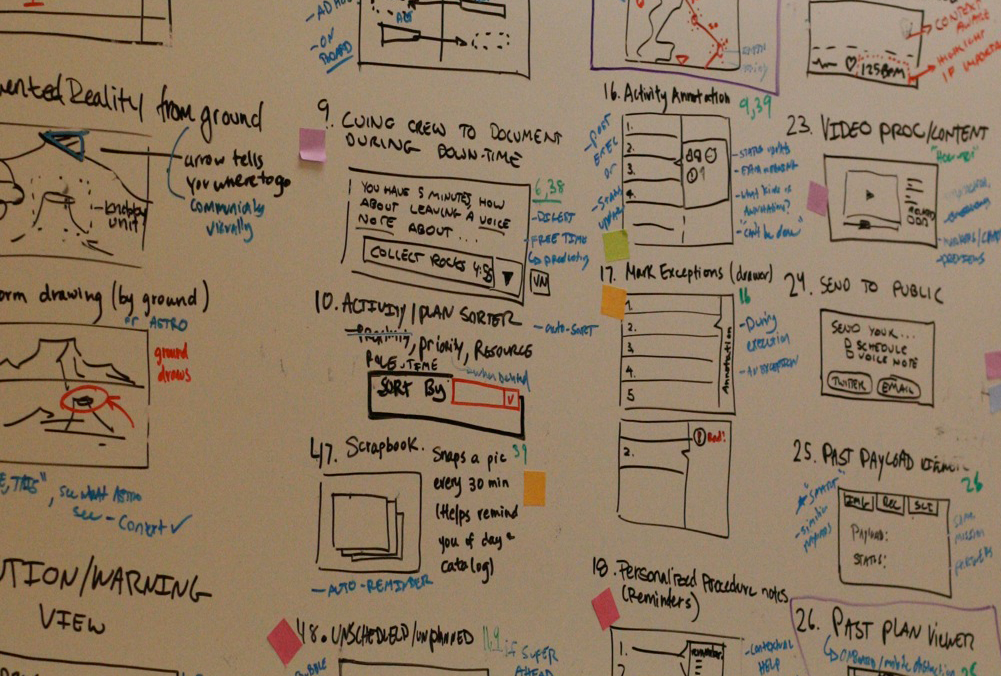Brainstorming
We began our process by brainstorming 50 ideas for visualizing an optimized timeline and 25 ideas around physical form, including hardware, input, and output. for planetary surface missions. We constructed a very crude physical mock-up with readily available materials to understand the physical nature of the envisioned device. While many of the brainstormed concepts departed from a classic timeline structure, all aimed to communicate the plan as structured by sequenced activities.
After evaluating our concepts internally, we presented all 50 ideas to members of the NASA Ames Human-Computer Interaction group for early validation and feedback. Using their insightful feedback, we reconciled our evaluated brain- stormed ideas into four more refined concept sketches
The objective for each of the sketches was to illustrate the information model of the concept, envisioned interaction design, and structure of the workflow.

Needs Validation
We evaluated the four concept sketches using a validation method called Speed Dating. We presented these concepts to participants with the purpose of eliciting feedback on features. We tested each of the four paper sketches with four participants, totaling 16 instances of testing overall.
From this needs validation session, we received useful feedback on features that worked well in serving perceived user needs and others that did not. With all of our user research in mind, we created a final refined sketch from which we started wireframing and development.



